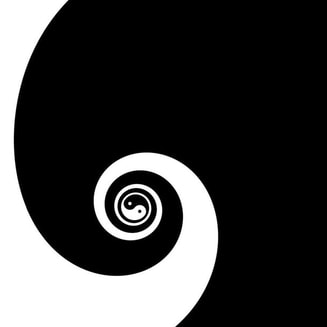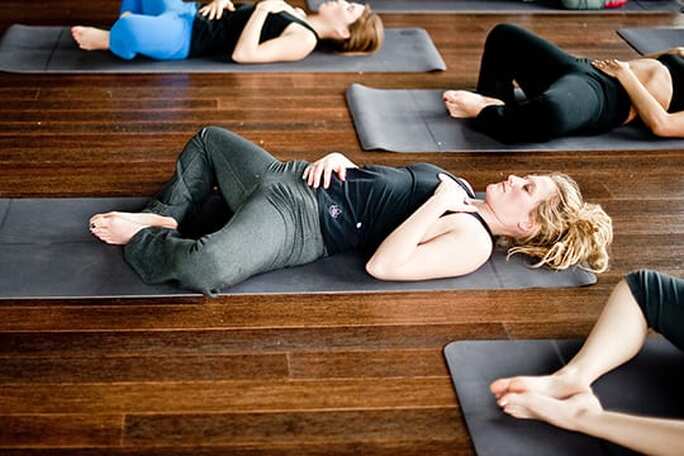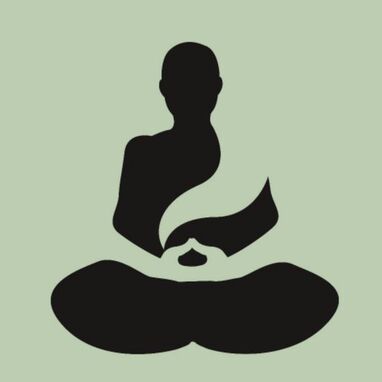Cultivating Yin: The Secret to Better Postures & Relaxation
|
Calming, soothing, rejuvenating—all appropriate descriptions of the yin yoga system—but it isn’t just about gentle postures and smooth, controlled body movements; if you aren’t dedicating special attention and intention to your breathing, you simply are not getting the best results possible from your practice.
In this blog we will explain why no yin yoga regimen is complete without deep, mindful breathwork. Grounded in both Chinese Medicine and modern scientific explanations, we will and explore the best ways to cultivate yin with deep breathing. Fighting stagnation through the balance of breath |
One of the main phenomena that ages us is stagnation. This concept is clearly explored in the Tao Te Ching in Verse 76:
“Men are born soft and supple; dead they are stiff and hard. Plants are born tender and pliant; dead, they are brittle and dry. Thus whoever is stiff and inflexible is a disciple of death. Whoever is soft and yielding is a disciple of life.”
Mindful, meditative movement can help us in this respect, by loosening up stiff joints and stimulating acupressure meridians across the body. All major disciplines similar to yin yoga like Qigong and Tai Chi have this important focus, however, there is more that is needed to achieve a completely harmonious where the body’s restorative processes are stimulated and the effects of aging are reversed.
Balance of yin and yang is at the core of any Taoist art—even if the practice or movement is yin in nature, emphasizing gentle, largely stationary postures. Movement itself is the yang opposite of yin stillness, so even within yin movement a deeper stillness is still needed to balance the yang. This essential balancing force is focused and sustained deep belly breathing—the conduit that Chinese medicine expert Peter Deadman says allows qi and blood to flow naturally within the stillness. Many Taoist yoga practices such as SunDo combine yin movement with tancheon breathing during its postures and five element qi exercises.
“Men are born soft and supple; dead they are stiff and hard. Plants are born tender and pliant; dead, they are brittle and dry. Thus whoever is stiff and inflexible is a disciple of death. Whoever is soft and yielding is a disciple of life.”
Mindful, meditative movement can help us in this respect, by loosening up stiff joints and stimulating acupressure meridians across the body. All major disciplines similar to yin yoga like Qigong and Tai Chi have this important focus, however, there is more that is needed to achieve a completely harmonious where the body’s restorative processes are stimulated and the effects of aging are reversed.
Balance of yin and yang is at the core of any Taoist art—even if the practice or movement is yin in nature, emphasizing gentle, largely stationary postures. Movement itself is the yang opposite of yin stillness, so even within yin movement a deeper stillness is still needed to balance the yang. This essential balancing force is focused and sustained deep belly breathing—the conduit that Chinese medicine expert Peter Deadman says allows qi and blood to flow naturally within the stillness. Many Taoist yoga practices such as SunDo combine yin movement with tancheon breathing during its postures and five element qi exercises.
|
The science of stagnation (and what good breathing can do about it)
The notion of wholeness in Chinese Medicine is made up of three integral parts we know of as ”the three treasures:” jing, qi, and shen. Many yogic disciplines give clear guidance on optimizing jing and shen through the mind-body synchronization of postures, but provide fewer tools for integrating the critical “qi” or breath aspect into practice—the treasure directly associated with vitality. So what does this lack of focused breathing (qi) deprive us of in scientific terms? |
For one—nitric oxide, an essential compound produced solely from deep, consistent nasal breathing. In his insightful article, The Transformative Power of Deep, Slow Breathing, Deadman explains that nitric oxide relaxes muscle fibers, opens blood vessels, helps to lower blood pressure, reduces blood clotting, increases blood and oxygen flow to the brain, strengthens immune function, and reduces inflammation.
Production of this important compound is reduced by 50 percent in people with sinus disorders and 83 percent after just five minutes of strenuous activity. We can’t always avoid this, but we can replenish what we’ve lost through slow and deep breathing which increases nitric oxide absorption.
Additionally, Deadman notes that when we overlook the treasure of breath, we lose out on the beneficial quality of CO2 in our bodies. When proper deep breathing technique becomes habit, carbon dioxide increases the oxygen absorption ability of pulmonary blood vessels, which is critical for any productive yoga practice or physical activity.
Additionally, Deadman notes that when we overlook the treasure of breath, we lose out on the beneficial quality of CO2 in our bodies. When proper deep breathing technique becomes habit, carbon dioxide increases the oxygen absorption ability of pulmonary blood vessels, which is critical for any productive yoga practice or physical activity.
A Powerful Grounding and Breath Cultivation Tool
Another key factor in aging is the floating up of yang and sinking down of yin energy in the body. Acupuncturist and wellness professional Joel Dunning cites this binary as one of the major drivers of both physical and mental age-related irregularities. Physically, lower backs weaken, muscles lose definition, blood pressure rises, headaches become more frequent, and essential organ functions like digestion fall out of rhythm. The mind also gets “cooked,” as Dunning says, with nervousness, lack of focus, and insomnia becoming chronic in their effects.
To help yin yoga practitioners and teachers counteract both stagnation and the sinking of yin and rising of yang energies, Dunning developed a unique program—a guide to Internal Organ Qi Exercises. The e-booklet and video offering provides a thorough and accessible introduction to one of Taoist Yoga’s most powerful tools for optimal breathing and grounding.
In discussing the importance of breath, Deadman states that “varied physical and emotional manifestations of uprising of yang can be counteracted by sinking and grounding the lower body and by breathing slowly and deeply into the lower abdominal core.”
|
These two essential points are both tended to in the Qi Exercises’ quick 10-minute breathing and stretching routine, which can be added to any yoga practice or physical activity for heightened results. “The movements cover the whole body and the targeted breathwork opens up energy pathways across it,” Dunning says. Additionally, the Internal Organ Qi Exercises emphasize the highly important strengthening of the legs through their low stances that promoter greater stability in all movement.
To learn more about SunDo International’s Qi Exercise program and the benefits it can have to your yoga practice visit the blog here. |



